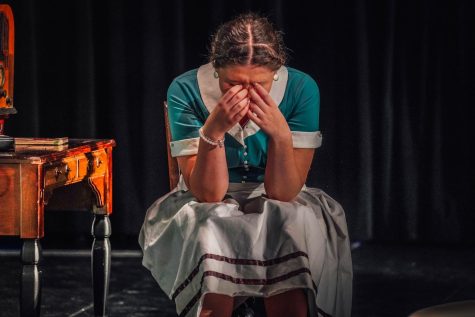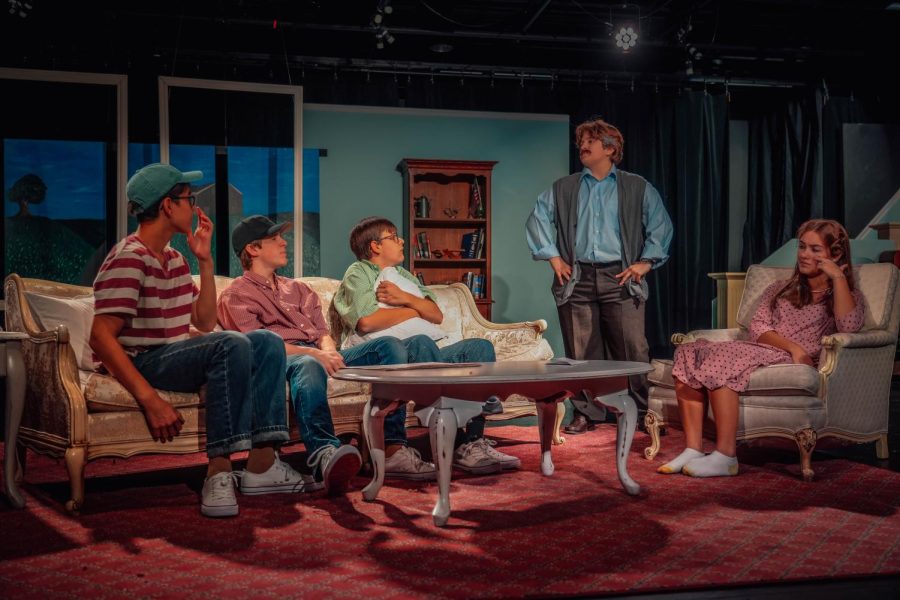Theater Society’s fall play ‘Our Girls’ a ‘classic farce’
This November, DePaul Prep Theater Society put on their most recent production, a play called Our Girls.
The play was written in 1938 by Conrad Seiler, better known for his previous work in screenwriting. The story is set in the 1940s, in Beaver Falls, and the main characters being a group of brothers with an aunt that despises boys. Their Aunt Jessie lives in England, and believes that all of her “nephews” are actually nieces. She will grant each of her “nieces” a sum of money on their sixteenth birthday, but only if she still believes that they are girls. The brothers have been keeping up the charade – until their aunt decides to visit them… Will they be able to keep up the act in person?
This play was chosen by Mr. Bryant, DePaul Prep’s theater director, because he “thought it was funny in that the audience knew what the premise was, there wasn’t any surprise there. It was funny because the characters are just doing everything they can to keep this fraud going.”
He also described the story as a, “classic farce of mistaken identity.”

The actors in this play worked very hard for months ahead of performance week. They had hours-long rehearsals, fittings, and put a lot of effort into making the play the best that it could be.
The play was a very “dialogue-driven,” production, said Mr. Bryant said, so each actor had to dedicate a lot of time to memorization.
The actors were challenged with making it to the long rehearsals and memorizing their lines, all on top of their school work and other activities.
Many of them put in five or six days a week of rehearsal.
Izzy Morales, who played Moni, said that towards the end of rehearsals, “the hours were long in the black box but we did make the best of it together. A family sticks together!”
A great deal of work was also put into this play behind the scenes. Aviva Laegeler painted portraits for the set, Amina Padilla worked on landscapes for the windows, Rey Spatz did custom work with an old radio to make it usable, and Alejandro Osleber worked on finding sound queues that were “comedic and appropriate,” said Mr. Bryant.

Bryant also described the play as “high-energy,” which envelopes the work put in both on stage and off, the actors’ portrayals of characters, the set work, and the overall effort that went into this production.
“This was a play that in a lot of cases is a forgotten American play but deserves to be considered a classic.”






